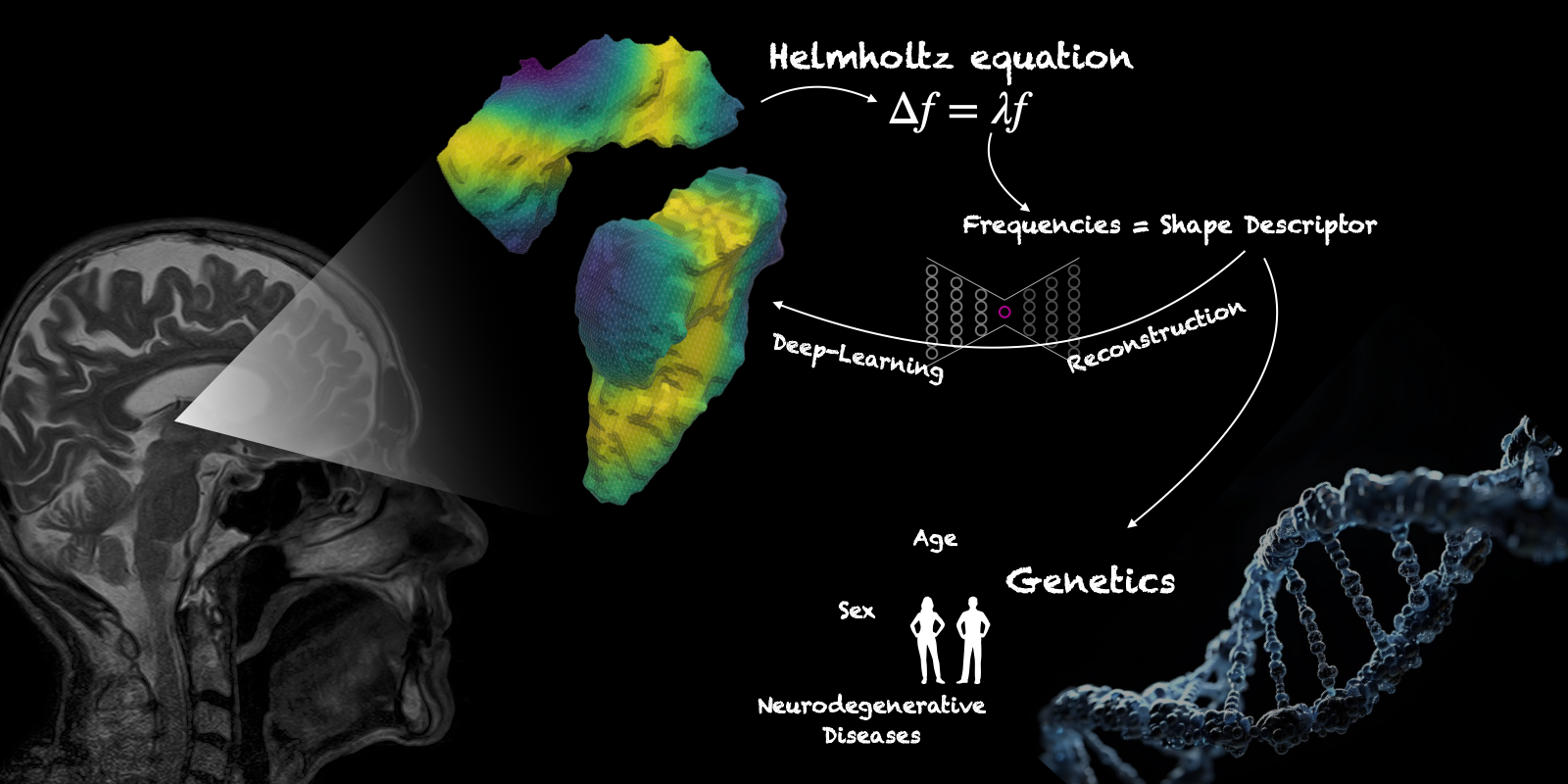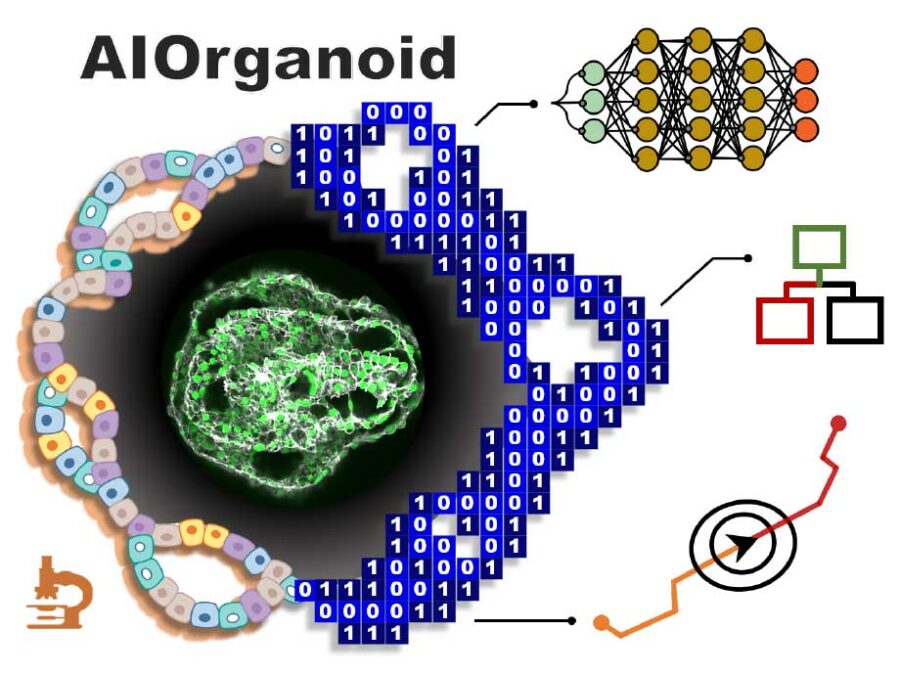BrainShapes
Laplace-Beltrami shape descriptors of brain structures: Comparative optimization and genetic dissection

The project scrutinizes the 3D architecture of the human brain by harnessing MRI data and employing the Laplace-Beltrami Operator (LBO) alongside manifold-based measures to unravel its intricate geometric features. Machine learning approaches are utilized to explore individual brain structural properties and their connections to specific characteristics.
Innovative Deep Neural Networks are employed to reverse engineer the 3D structure from the LBO spectrum. Following this, a Genome-Wide Association Study is conducted on the resulting errors to correlate genetic variations with structural distinctions. Collectively, this project enhances the understanding of the brain’s shape variability, shedding light on its hidden intricacies and its connection to inter-individual differences.
Other projects

AIOrganoid
Artificial Intelligence Assisted-Imaging for Creating High-yield, High-fidelity Human Lung Organoid
AIOrganoid will apply cutting-edge imaging techniques and develop novel AI-based solutions to facilitate human lung organoid formation with high yield and fidelity, bridging the gap between cell biology and computational imaging.
SATOMI
Tackling the segmentation and tracking challenges of growing colonies and microbialdiversity
An artificial intelligence will observe the growth of bacteria: from microscope images of bacterial cultures taken at regular intervals, it will precisely track the development and division of individual cells – even when multiple bacterial species are cultivated together.
TerraByte-DNN2Sim
On the trail of the mystery of the laws of calving
Researchers still face a mystery when it comes to the laws by which glaciers calve. This project aims to use satellite imagery, artificial intelligence, mathematical optimisation and a new data processing pipeline to track the movements of glacier fronts in Antarctica to get closer to solving the mystery.